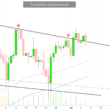Nestled between the benchmark 10-year Treasury note and the 30-year bond is a security that often flies under the radar: the 20-year Treasury bond. Introduced by the U.S. government in May 2020, this bond has yet to receive the attention it deserves.
A Hidden Gem in the Treasury Market
While the 10-year and 30-year Treasury securities dominate the market, the 20-year Treasury bond offers a unique investment opportunity that shouldn’t be ignored. With a maturity falling right in the middle, this security provides a balance between long-term stability and shorter-term returns.
The Significance of the 20-Year Treasury Bond
The reintroduction of the 20-year Treasury bond is a testament to the U.S. government’s commitment to diversify its offerings and cater to a wide range of investors. This intermediate-term bond fills a gap that previously existed, providing an attractive alternative for those seeking a medium-term investment strategy.
Capitalizing on Potential
Despite its relative obscurity, the 20-year Treasury bond has great potential for savvy investors. Its position between two well-established bonds makes it an intriguing option, offering a chance to tap into stable returns without committing to the lengthy maturity of a 30-year bond.
The Future of the 20-Year Treasury Bond
As investors become more aware of this hidden gem, the popularity of the 20-year Treasury bond is expected to grow. With its appealing risk-to-reward ratio, it has the potential to become a mainstay in portfolios seeking a well-rounded mix of long-term and short-term investments.
Don’t overlook this opportunity – consider adding the 20-year Treasury bond to your investment strategy today!
Return to Normal: Long-Term Treasury Yields on the Rise
On Tuesday, the rate on the 20-year bond surged towards 4.9% – the highest since its reintroduction. This milestone marked a significant shift as it became the first long-term Treasury yield to approach the 5% mark. The recent policy decision by the Federal Reserve has set in motion the return of long-term Treasury yields to historically normal levels. The prevailing theme of higher rates for an extended period continues to shape the market.
Investors now face an important decision. With an almost 5% yield, long-term government debt offers an increasingly attractive alternative to equities for those who have yet to enter this sector of the Treasury market – provided they time their entry wisely. Higher yields have a significant impact on equities, resulting in higher discount rates. This shift in the market presents investors with more options and potential advantages.
Lawrence Gillum, a fixed-income strategist at LPL Financial in Charlotte, North Carolina, pointed out that historically, a yield of 3%-5% on the 10-year Treasury and its predecessors has been the norm since 1880. Given recent developments, he believes it is not unrealistic to think that the 20-year yield could pave the way for the 10- and 30-year rates to approach 5%. The resilience of the economy has outpaced expectations, surprising both bond and equity markets.
The 20-year bond is considered an outlier in the world of securities due to its lack of natural demand. This explains why its yield is higher than that of the benchmark 10- and 30-year securities. However, as the highest yield on the back end of the yield curve, it is likely to draw interest from investors looking for new opportunities.
With long-term Treasury yields returning to historic levels, investors must carefully consider their options. The rise in rates presents a compelling case for government debt over equities. As the bond market continues to evolve, the allure of the 20-year bond as a viable investment option grows stronger.
A Dilemma for Investors: Yields vs. the Long Run
Earlier on Tuesday, investors found themselves caught between attractive yields and the possibility of a prolonged period of inflation. This was evident as buyers and sellers battled it out in the market for 10-, 20-, and 30-year Treasurys. By late afternoon in New York, all three yields had risen slightly, with the 10-year Treasury hovering around 4.56% and the 30-year Treasury at 4.69%.
At the same time, equities experienced a significant sell-off. The Dow industrials dropped more than 400 points or 1.2%, while the S&P 500 and Nasdaq Composite both saw declines between 1.5% and 1.6%.
Amidst this turmoil, investors are starting to take notice of the often-overlooked 20-year Treasury. “Everyone talks about the 1-, 2-, 10-, and 30-year Treasurys, but at around 4.85%, the 20-year looks incredibly attractive for asset allocation compared to equities in the long run,” explains John Farawell, Executive Vice President and Head of Municipal Trading at New York bond underwriter Roosevelt & Cross.
Farawell emphasizes that the 20-year Treasury currently offers the most favorable yield on the curve. Despite the selloff and the prospect of rates nearing 5%, he believes that these rates are moving in sync with each other.
As investors grapple with this dilemma, they must carefully consider the balance between enticing yields and the potential for long-term return. The market continues to fluctuate, leaving investors to navigate these turbulent waters with caution.





